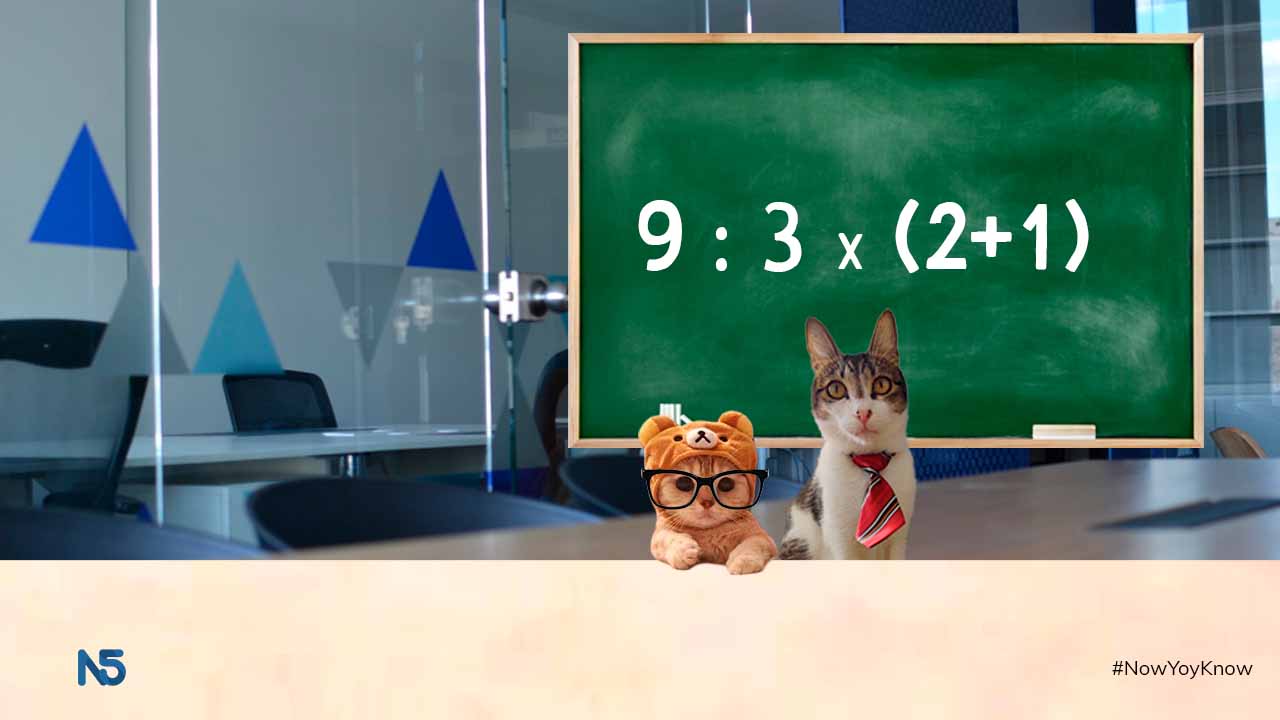When Pistacchio isn’t interviewing candidates for N5Now or mentally solving the Riemann hypothesis, he spends time on his favorite social activities: “Swiping left” on tinder, and giving lousy life advice to his friends.One of these fellow adventurers is Kiwi.
Kiwi expresses his individuality with the ironic-hipster use of ties, the design of alternative logos, and a fiery defense of inclusive language.
While Pistacchio recommended: “Whenever you see a Rottweiler, do this judo shot” Kiwi was crestfallen.
“What’s up Kiwi? Pistacchio asked.
“It is that I see the problems that you propose to the candidates and I realize that I am naked”
Kiwi, mathematics and logic are demanding disciplines, requiring full mastery of structural concepts and evolution in fields of increasing complexity. You cannot learn everything in one day. For me, for example, the PhD took me almost three ”.
“So let’s start with a simple challenge, which everyone will solve correctly … nine divided three multiplied by the sum of two plus one”:
Question:

9: 3 x (2 + 1)
Options:
- I see Pistacchio = I like.
- 9
- 1
- On which bank of the Niagara River should I answer it?
- Both results are wrong
- Hmmm I explain it in comments
Answer:
This is a trick question, deliberately defined ambiguously. Mathematical symbols are a convention, trying to simplify the interpretation of concepts.
To find out which of the answers is correct we should ask Pistacchio exactly what the question is
If it is: 9 hamburgers should be divided between 3 families with 2 parents and a son each, how many hamburgers does each member get? The answer will be 1
If it is: 9 hamburgers must be divided between 3 families, who will pay 2 dollars plus 1 dollar tip each. How much will the seller have raised? The answer will be 9.
In the absence of more data, the dilemma remains.
And it is that the mathematical notation changes depending on the educational system.
If we asked a Canadian and an American (each on one side of the Niagara River) what the correct answer is, they would surely answer different things. Since the first uses BEDMAS logic (where the D for division comes before the M for multiplication), while the second uses PEMDAS (where the M for multiplication comes before the D for division).

